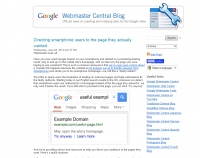
Like never before, you’ve got to keep a careful eye on your content; reviewing your online message for authority and placement. Google is penalizing thin content, duplicate content, and link-heavy content.
How can you make sure your content stays in the “green zone” versus the “red – penalty zone”? Here are a few tips to identifying and solving content related issues.
1. Check the bounce rate of your pages in Google Analytics. Look for pages where your bounce rate is higher than 75%. If the page has over 300 to 350 words of content you may want to consider if you want to keep the page. It may simply be a one stop page that does not lead prospects further in to know about your product and may need to be removed or updated to entice them to travel further into your site. Or if the page has under 250 words, the page may be too thin and need a rebuild.
For some of our clients, a 75% bounce rate may appear on pages that had previously been built for in-depth articles or to build site authority. These pages, although valuable years ago for SEO, may now be penalizing a website with a high bounce rate with Google as the site reader comes in to visit, but never makes it off that one page.
2. Consider using a tool like Screaming Frog to scan your site (up to 500 pages for free more with a license) for word count. You can watch a video of what the tool does on the Screaming Frog website. Target the pages that you find that have about 250 words only and then review the bounce rate in Google Analytics. Additionally I would recommend you take a look at pages that are over 1,000 words. In today’s mobile-sensitive Google extra long pages that will not render well on mobile or may cause excessive scrolling may damage your placement as well. Consider those extra long pages as candidates for a “break-up” into multiple pages that will be mobile reading friendly.
3. Use a tool like the MOZ Site Explorer to get a snapshot of what is happening with nofollow links and authority of inbound links. Use the tool to find your top linked pages as well as the top anchor text. Although you can see a few things for free the paid version will unlock more data if you decide to buy it. Taking a look at outbound links from a page may give you additional possible content related penalty insights.
Content pages under about 250 or so words, with lots of outbound links, and that have a high bounce rate may actually help to lower your website’s overall Google placement. Although one page or two certainly will not play a big factor in your overall ranking having a significant number of problem pages may set up your site for a Google thin content penalty.
With many website owners not reviewing their content except when they update to a new website, some businesses have content that has not really been reviewed for over three years and in some cases much longer than that.
If you have not taken a careful look at your business online presence recently it is important that you take a look now, as Google is factoring in thin content and bounce rate into their organic placement algorithm.
If you are looking for help to rework your content for Google and to build value for readers, I encourage you to contact McCord Web Services today. We are content experts!


